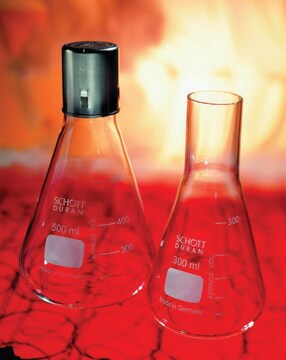HeLa-Mitotrap
15042201, human cervix, Epithelial, polygonal
Faça loginpara ver os preços organizacionais e de contrato
About This Item
Código UNSPSC:
41106514
Produtos recomendados
product name
HeLa-Mitotrap, 15042201
fonte biológica
human cervix
descrição
Human cervix carcinoma, knocksideways, rapid protein inactivation by rerouting to mitochondria for functional studies, genetically modified
modo de crescimento
Adherent
morfologia
Epithelial, polygonal
técnica(s)
cell culture | mammalian: suitable
Condições de expedição
dry ice
temperatura de armazenamento
−196°C
Descrição de linhagem celular
This cell line can be used to determine the function of a protein by rapidly inactivating the protein of interest by rapamycin induced rerouting of the protein to the mitochondria.
The HeLa-Mitotrap cell line is a stably transfected HeLa cell line expressing a mitochondrial trapping protein containing an FRB domain. The term FRB refers to a protein containing FKBP12 and Rapamycin Binding (FRB) domains within the mTOR (mammalian Target of Rapamycin) protein. The Hela-Mitotrap cell line can be transfected to express the target protein of interest genetically modified to have an FKBP domain. Upon treatment of the cells with rapamycin target proteins containing an FKBP domain will dimerize with FRB domains. The resulting protein complexes are sequestered to the mitochondria.
Treatment of cell lines containing both FRB and FKBP rapamycin binding proteins can sequester target proteins to the mitochondria within minutes of treatment rendering the cells ready for immediate assay. This type of approach, referred to as ‘‘knocksideways,′′ should be widely applicable as a means of inactivating proteins within a timescale of seconds or minutes rather than days.
The derivation of the expression construct for the generation of the FRB expressing HeLa cell line is described in Motley et.al (2006, PMID: 17035630)The Mito-YFP-FRB construct was based on a pEYFP-FRB plasmid (O. Glebov, MRC Laboratory of Molecular Biology, Cambridge, UK). The N-terminal sorting signal of Tom70p was amplified by PCR from yeast genomic DNA and cloned into the plasmid, then the Mito-YFP-FRB coding sequence was moved into the retroviral vector pQCXIH (Clontech), which carries a hygromycin resistance gene. Stable cell lines were selected using hygromyin selection.
The HeLa-Mitotrap cell line is a stably transfected HeLa cell line expressing a mitochondrial trapping protein containing an FRB domain. The term FRB refers to a protein containing FKBP12 and Rapamycin Binding (FRB) domains within the mTOR (mammalian Target of Rapamycin) protein. The Hela-Mitotrap cell line can be transfected to express the target protein of interest genetically modified to have an FKBP domain. Upon treatment of the cells with rapamycin target proteins containing an FKBP domain will dimerize with FRB domains. The resulting protein complexes are sequestered to the mitochondria.
Treatment of cell lines containing both FRB and FKBP rapamycin binding proteins can sequester target proteins to the mitochondria within minutes of treatment rendering the cells ready for immediate assay. This type of approach, referred to as ‘‘knocksideways,′′ should be widely applicable as a means of inactivating proteins within a timescale of seconds or minutes rather than days.
The derivation of the expression construct for the generation of the FRB expressing HeLa cell line is described in Motley et.al (2006, PMID: 17035630)The Mito-YFP-FRB construct was based on a pEYFP-FRB plasmid (O. Glebov, MRC Laboratory of Molecular Biology, Cambridge, UK). The N-terminal sorting signal of Tom70p was amplified by PCR from yeast genomic DNA and cloned into the plasmid, then the Mito-YFP-FRB coding sequence was moved into the retroviral vector pQCXIH (Clontech), which carries a hygromycin resistance gene. Stable cell lines were selected using hygromyin selection.
Meio de cultura
Dulbecco′s Modified Eagle′s Medium, high glucose (DMEM) + 2mM Glutamine + 10% Fetal Bovine Serum (FBS)
Rotina de subcultura
Trypsinise cultures at 80% confluence with 0.05% Trypsin/EDTA. Seed flasks at 2 x 104 cells/ cm2. Cultures must be incubated in a humidified 10% CO2/90% air incubator at 37oC.
Outras notas
Cultures from PHE Culture Collections and supplied by Sigma are for research purposes only. Enquiries regarding the commercial use of a cell line are referred to the depositor of the cell line. Some cell lines have additional special release conditions such as the requirement for a material transfer agreement to be completed by the potential recipient prior to the supply of the cell line. Please view the Terms & Conditions of Supply for more information.
Exoneração de responsabilidade
This cell line has special release conditions: Commercial organisations are required to complete the ′Cell Line Release Authorisation for Research Use in Commercial Organisations′ release conditions form.
Certificados de análise (COA)
Busque Certificados de análise (COA) digitando o Número do Lote do produto. Os números de lote e remessa podem ser encontrados no rótulo de um produto após a palavra “Lot” ou “Batch”.
Já possui este produto?
Encontre a documentação dos produtos que você adquiriu recentemente na biblioteca de documentos.
Nossa equipe de cientistas tem experiência em todas as áreas de pesquisa, incluindo Life Sciences, ciência de materiais, síntese química, cromatografia, química analítica e muitas outras.
Entre em contato com a assistência técnica






